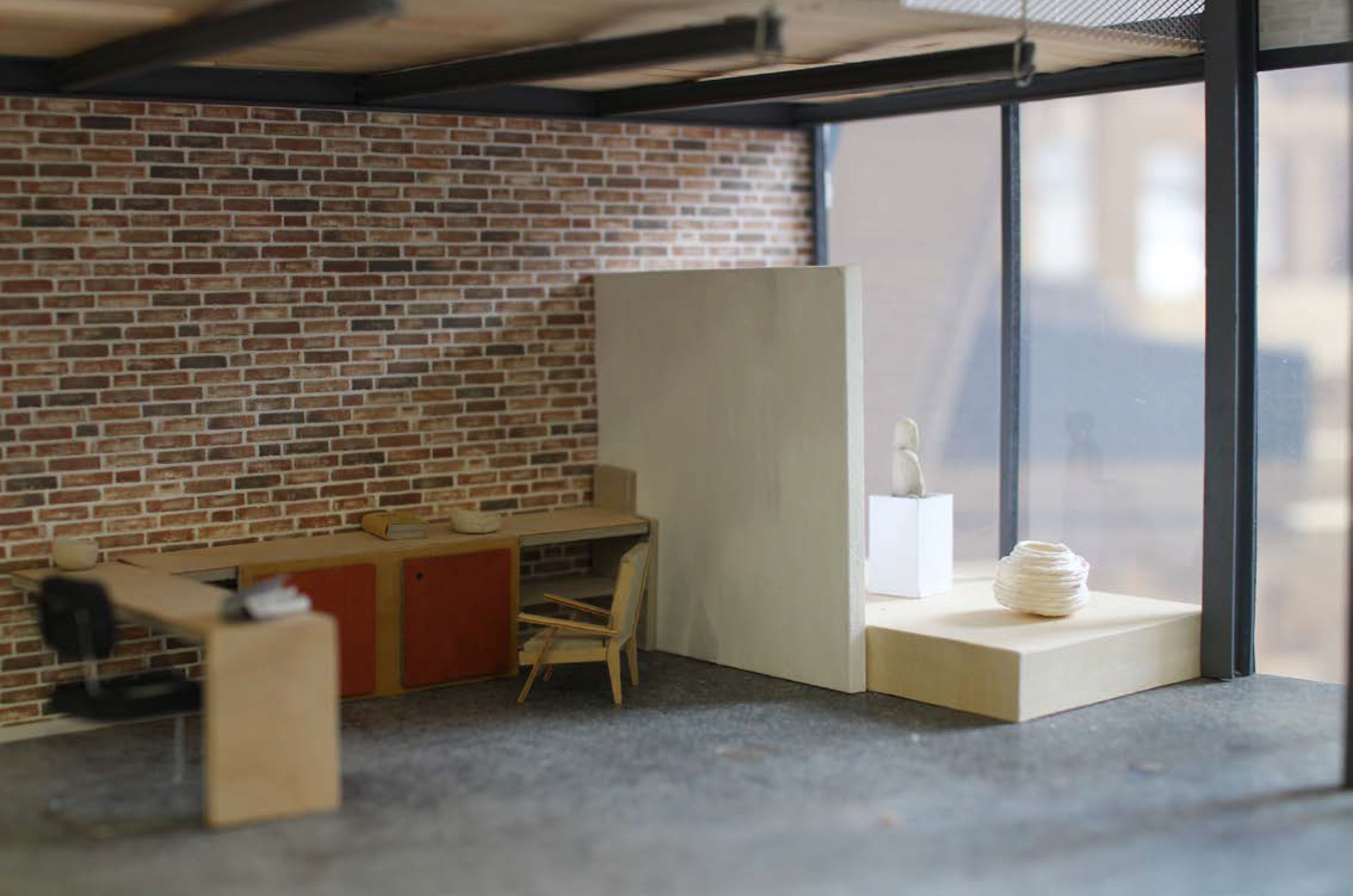Architecture and Generosity - Work
Project by Year 3 student Michal Kasperski
In the academic year 2017/18 Unit 7, tutored by Zoë Berman, has continued working under the broad theme of Architecture and Generosity. Last year the Unit developed architectural proposals that represented activities of communality and reciprocal care. This year we are expanded our ideas under the thematic umbrella of generosity – working on strategies that support and enable making, and living.
Cardiff is a city founded on industry. Today its economy is centered on retail, media, film, finance and communication technology – but the city and surrounding towns have a history rooted in production of iron, steel, coal mining and ship building. Since the 1970s these industries have been virtually wiped out, leaving communities struggling with loss of employment and a loss of identity. “The British have sometimes been labelled a ‘nation of shopkeepers’. What they really loved was being a nation of manufacturers, which makes every step in the UK’s long descent from being the world’s first industrial power especially painful.”
Regeneration has begun on Dumballs Road with the building of student halls, offices and luxury flats. Curran Embankment is earmarked for the next round of development. The plans follow the precedent for switching land use; away from existing manufacturing, to new high-density housing. This sets up a problem for the future. The pervading contemporary master-planning approach for many cities locates suppliers of a metropolis – mechanics, brewers, welders, wood workers, printers and so on – outside of the city.
This is a tendency we are challenging.
Locating those who supply a city with its products and services on the edges of an urban center presents issues of sustainability, including extensive transport costs, significant increases in fuel consumption, increased lead times and so on. This creates socio-economic ghettoisation of space; only housing versus only making. We are exploring how the two could work together alongside each other.
We have designed alternative visions that enable inner city manufacturing, rather than sending it to the cities fringes. We have developed creative, thoughtful strategies seeking to support and celebrate existing businesses – alongside providing space for further workshops and studios for makers to earn a living, interwoven with spaces for living.
The Reading Retreat — a short film, by Jim Stephenson
The Reading Retreat has been designed to create a quiet area within the playground of Stoneydown Park Primary School for children to spend time away from the busyness of the playground to enjoy reading.
This is a project that connects local skills and knowledge within the area of Walthamstow, London. The project was designed by architects Zoë Berman with Bennedetta Rogers, and constructed by Christina French, Lua Garcia and Toby Poolman - all of who work in the area and are members of the nearby Blackhorse Workshop maker space.
The original brief was to enclose an open sided lean-to and build a new deck beneath the existing canopy. The design pushes this original brief further to create a raked seating area on which pupils can sit with a book, to relax and read during playtime. The space is also used for one to one reading support for young pupils aged 5 – 11 years.
Working with a limited construction budget the architects and makers worked closely together to develop a proposal that was pre-fabricated at Blackhorse Workshop and reassembled on site. The raked seating area offers both steps on which to sit, as well as the treads being hinged to create storage area beneath for books. The seated area is painted in soft shades of green to tie in with the tones of the existing school cladding. Embracing low cost and readily available materials, the structure was formed with joinery grade pine and is clad with corrugated polycarbonate.
The project is rare in having been lead by an almost wholly female team. This has become an important aspect of celebrating this project. The women-lead team offers an important example to young people, in a school that is highly diverse and supports children from a range of backgrounds
image Caption






